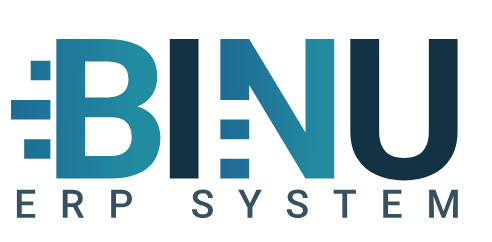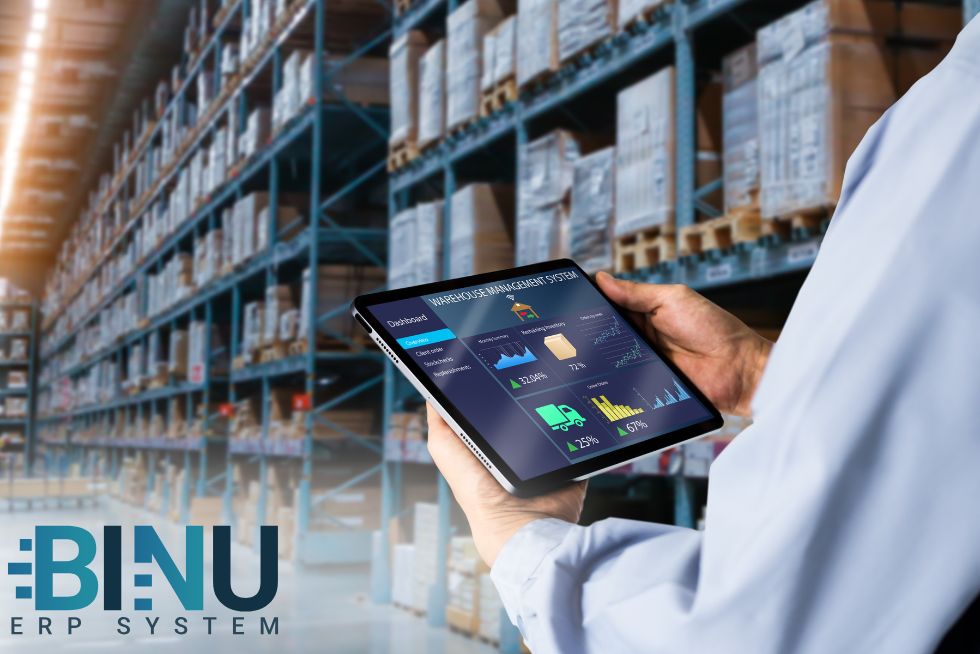Table of Contents
1. Why Management Should Care About full Operational Visibility
In manufacturing, speed, accuracy, and adaptability separate market leaders from those struggling to keep up. The ability to see every moving part of your operation in real time, from raw materials to finished goods in the customer’s hands, is no longer a nice to have. It’s a strategic requirement.
ERP-WMS integration is the technology backbone that makes this possible. When inventory manufacturing processes, product structures, Bills of Materials (BOM), and production planning are connected with your warehouse operations, you gain true operational visibility.
Example for a Management:
Imagine launching a new product line. With a connected system, the BOM is instantly validated against live inventory levels. Procurement is triggered automatically, warehouse tasks are assigned in real time, and production schedules are adjusted to ensure launch dates are met. No delays, no guesswork, just execution.
2. Best Practices for Managing Connected Operations
Implementing ERP-WMS integration is not a technical upgrade , it’s a strategic move that can reshape your competitive position in the market. To maximize impact, CEOs should focus on these core principles:
| Strategic Best Practice | Executive Value Proposition |
|---|---|
| Start with a Strategic Vision | Positions integration as a growth-focused business transformation, aligning all departments toward common goals. |
| Scalable Technology: Choose Systems That Grow with Your Business | Future-proofs operations with ERP and WMS platforms that support API integrations, cloud/hybrid deployment, and emerging technologies like AI and IoT, ensuring the system can scale with market and production growth. |
| Change Management: Prepare Your Team for Transformation | Ensures cross-functional alignment from procurement to the shop floor, with proper training, workflow adaptation, and transparent communication to drive adoption and minimize disruption. |
| Leverage Product Structure & BOM as Strategic Assets | Ensures materials are available before production, prevents bottlenecks, and aligns engineering, procurement, and production. |
| Transform the Warehouse from Cost Center to Value Driver | Improves fulfillment speed, reduces errors, optimizes labor, and turns warehouse operations into a driver of customer satisfaction and revenue growth. |
| Align Production Plans with Real-Time Operational Tracking | Uses the production plan for internal control of operations, directly linked to the BOM and product structure. Enables real-time monitoring of the entire manufacturing process, ensuring all activities are connected and synchronized for maximum efficiency. |
| Prioritize Real-Time Data for Executive Decisions | Delivers a single source of truth, live KPI dashboards, and predictive analytics for accurate, timely strategic decision-making. |
1. Start with a Strategic Vision
Integration must be positioned as a business transformation project, not an IT exercise.
Communicate a clear, organization-wide vision: the goal is to create a connected manufacturing ecosystem where engineering, procurement, production, and warehousing operate from the same real-time data.
2. Scalable Technology: Choose Systems That Grow with Your Business
Ensure your ERP and WMS platforms are future-proof and expansion-ready. Look for: Cloud or hybrid architecture allowing seamless geographic and volume scaling.
3. Change Management: Prepare Your Team for Transformation
Change management is critical. Departments must align cross-functionally:
- Engage from procurement through shop floor.
- Train teams on new workflows like BOM-driven picking and real-time tracking.
- Establish transparent communication to drive adoption and reinforce strategic value.
4. Leverage Product Structure and BOM as Strategic Assets
For executives, the product structure and BOM are more than engineering documents, they are strategic levers for operational efficiency.
When BOM data is connected to real-time inventory and warehouse systems:
- Material availability is confirmed before production starts.
- Production delays caused by missing components are eliminated.
- Procurement becomes proactive rather than reactive.
Diagram (descriptive): BOM-Driven Execution Flow
- Sales order confirmed.
- ERP checks BOM against live inventory.
- Shortages trigger automatic purchasing or transfers.
- WMS stages components in sync with production schedules.
Here is an example of how you can connect your operations:
5. Transform the Warehouse from Cost Center to Value Driver
Historically, warehouses were seen as cost centers—necessary, but not strategic. With ERP-WMS integration, the warehouse becomes a profit enabler:
- Faster order fulfillment reduces lead times, increasing customer satisfaction.
- Real-time tracking prevents losses, shrinkage, and misplacements.
- Labor efficiency improves through automated task assignments and optimized routing.
For Management, this shift means the warehouse is no longer just overhead—it’s a competitive advantage.
6. Align Production Plans with Real-Time Operational Tracking
In a fully connected ERP environment, the production plan becomes more than a scheduling tool — it’s a live operational control system.
- Directly linked to the Bill of Materials (BOM) and product structure.
- Provides real-time tracking of all manufacturing activities, from material allocation to work-in-progress and final assembly.
- Ensures every department — from procurement to the shop floor — operates on the same, constantly updated data.
This integration eliminates guesswork, prevents bottlenecks, and ensures that all activities are connected and synchronized, resulting in maximum efficiency and predictable delivery performance.
7. Prioritize Real-Time Data for Executive Decisions
At the CEO level, every major decision should be backed by current, accurate data.
Integration ensures:
- Single Source of Truth — no conflicting departmental reports.
- Live KPI Dashboards — track fill rates, cycle times, and inventory turnover instantly.
- Predictive Analytics — forecast shortages, lead time risks, and demand spikes before they happen.
Conclusion
ERP-WMS integration is no longer just a technical enhancement—it is a strategic imperative for modern manufacturing. By connecting production planning, product structures, inventory, and warehouse operations in real time, management gains full operational visibility, proactive control over resources, and the ability to make data-driven decisions. Executives who embrace scalable technology, foster cross-functional change management, and leverage their BOM and warehouse as strategic assets can transform operations from cost centers into competitive advantages. Ultimately, prioritizing real-time data and aligning all functions around a unified operational vision ensures efficiency, agility, and sustained growth in an increasingly demanding market.
FAQ
1. What is ERP-WMS integration?
ERP-WMS integration connects enterprise resource planning (ERP) systems with warehouse management systems (WMS) to provide real-time visibility of inventory, production, and warehouse operations.
2. Why should management care about ERP-WMS integration?
It enables executives to make data-driven decisions, improves operational efficiency, reduces delays, and transforms the warehouse from a cost center into a value-driving function.
3. How does integration improve production planning?
By linking the Bill of Materials (BOM) and product structures to real-time inventory and warehouse data, production plans are synchronized, reducing bottlenecks and ensuring timely product delivery.
4. What role does the BOM play in ERP-WMS integration?
The BOM becomes a strategic asset, confirming material availability before production starts, triggering automatic procurement, and aligning procurement, engineering, and production processes.
5. How does integration transform the warehouse?
The warehouse shifts from being a cost center to a value driver by speeding up fulfillment, improving labor efficiency, reducing errors, and enhancing customer satisfaction.
6. Why is real-time data important for executives?
Real-time data provides a single source of truth, live KPI dashboards, and predictive analytics, enabling accurate, proactive, and strategic decision-making.
7. What technology features should management look for?
Scalable ERP and WMS systems with cloud or hybrid architecture, API integrations, and support for emerging technologies like AI and IoT ensure future-ready operations.
8. How can change management improve integration success?
Preparing teams through training, cross-functional alignment, and transparent communication drives adoption, minimizes disruption, and ensures the integration delivers strategic value.
9. Can ERP-WMS integration help with new product launches?
Yes. Integration automatically validates BOMs against inventory, triggers procurement, assigns warehouse tasks, and updates production schedules, ensuring smooth, on-time product launches.
10. What is the ultimate business value of ERP-WMS integration?
It maximizes operational efficiency, aligns all departments under a unified vision, reduces costs and delays, and provides a competitive advantage in fast-moving manufacturing markets.

